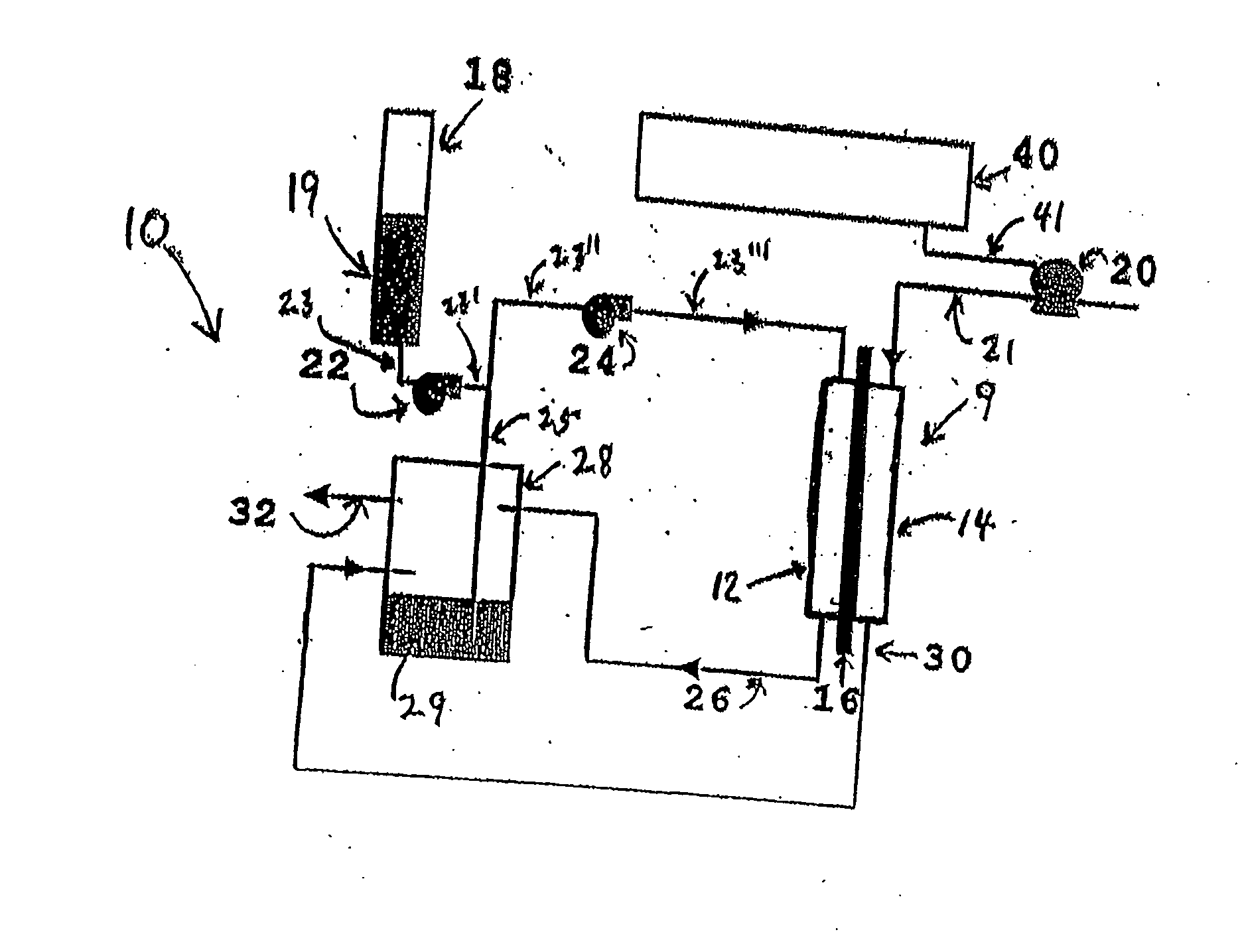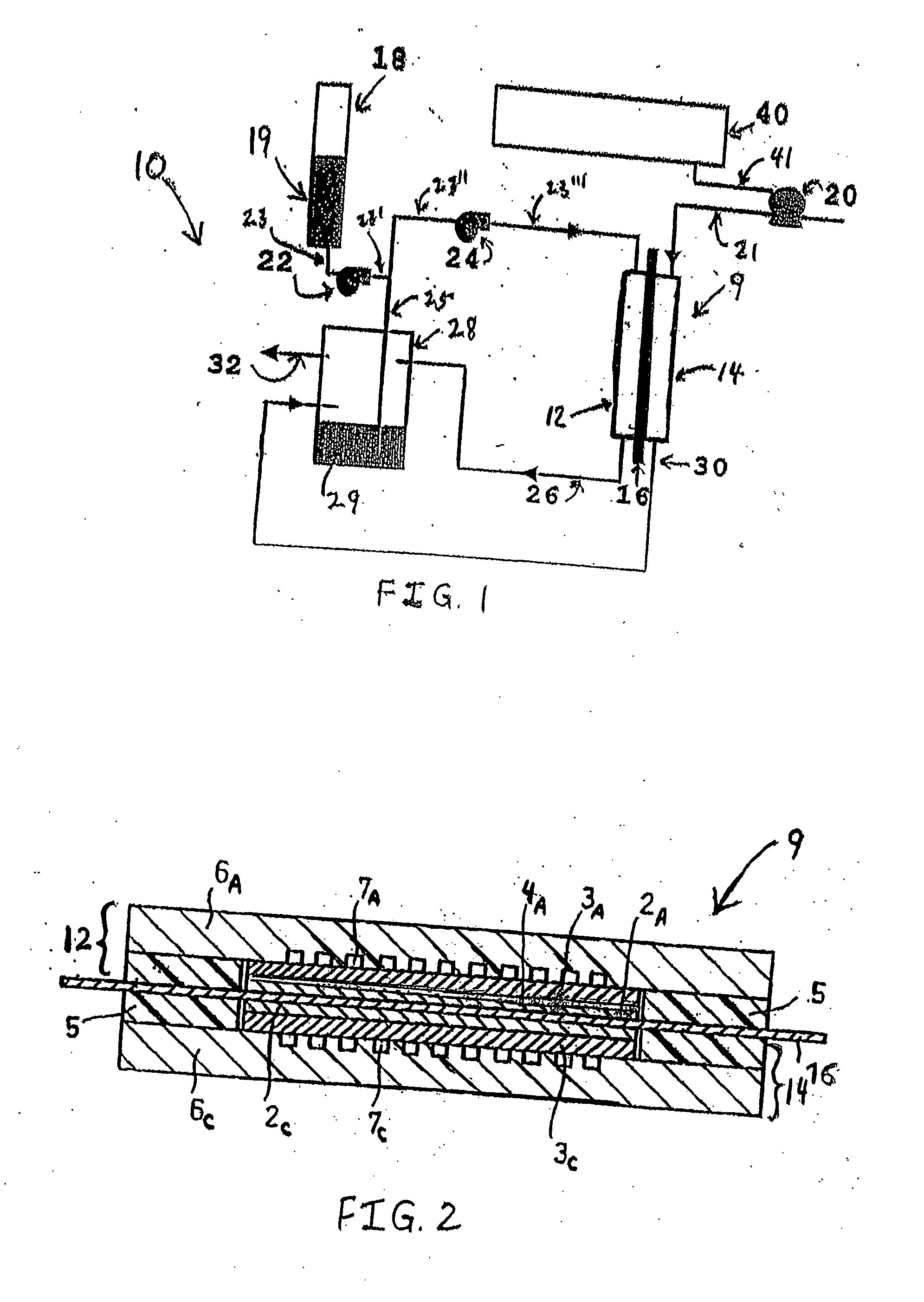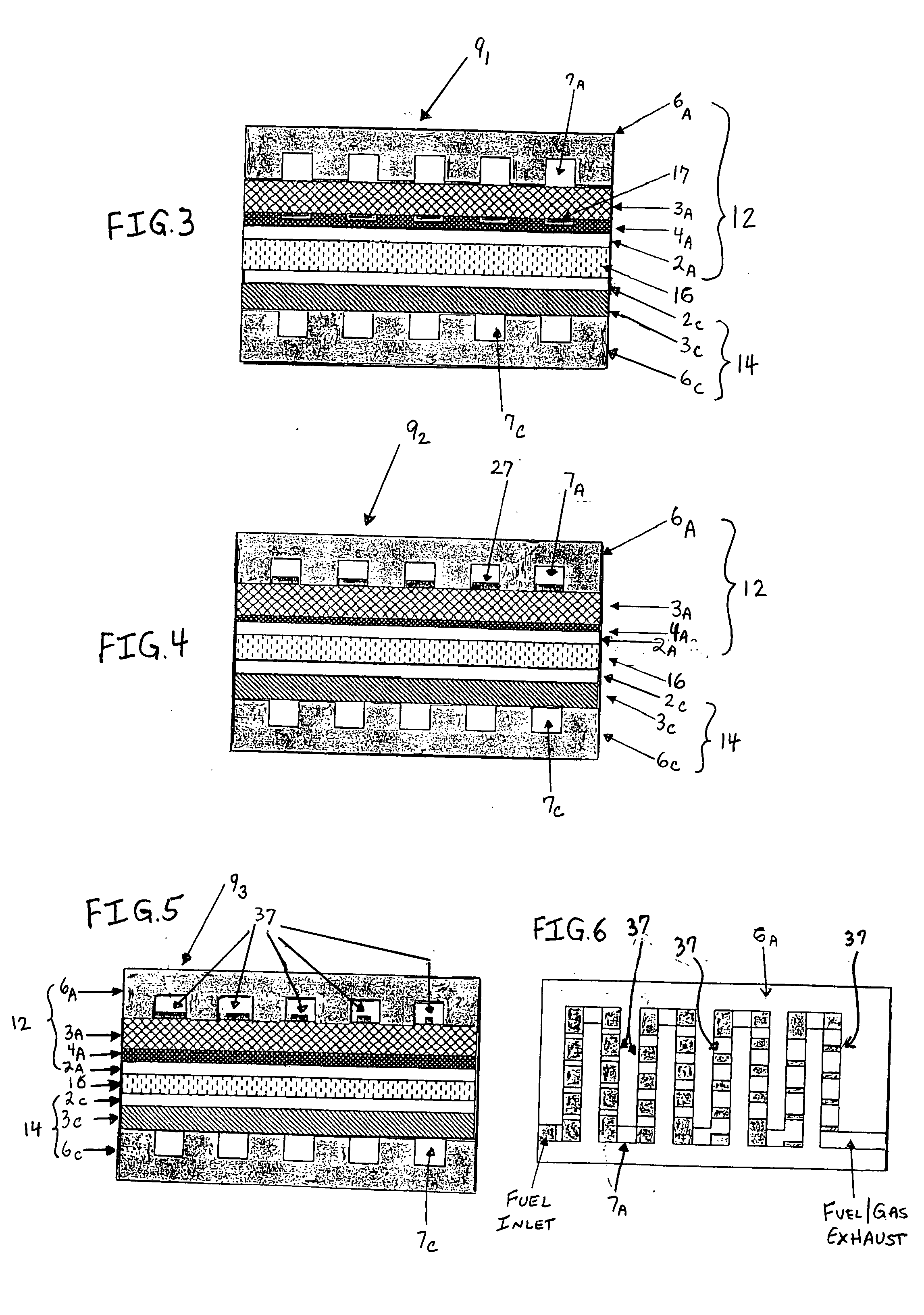Anode electrodes for direct oxidation fuel cells and systems operating with concentrated liquid fuel
a technology of direct oxidation fuel cells and electrodes, which is applied in the direction of fuel cell details, cell components, electrochemical generators, etc., can solve the problems of parasitic power loss, methanol partly permeates the membrane electrolyte, and reducing the system energy density,
- Summary
- Abstract
- Description
- Claims
- Application Information
AI Technical Summary
Benefits of technology
Problems solved by technology
Method used
Image
Examples
Embodiment Construction
[0047] The present disclosure relates to high power conversion efficiency, DOFC and systems operating with highly concentrated fuel, e.g., DMFC's and DMFC systems, and electrodes / electrode assemblies therefor.
[0048] Referring to FIG. 1, schematically shown therein is an illustrative embodiment of a DOFC system adapted for operating with highly concentrated fuel, e.g., a methanol-based DMFC system 10, which system maintains a balance of water in the fuel cell and returns a sufficient amount of water from the cathode to the anode under high-power and elevated temperature operating conditions. (A DOFC / DMFC system is disclosed in co-pending, commonly assigned U.S. patent application Ser. No. 11 / 020,306, filed Dec. 27, 2004).
[0049] As shown in FIG. 1, DMFC system 10 includes an anode 12, a cathode 14, and a proton-conducting electrolyte membrane 16, forming a multi-layered composite MEA 9. Typically, a fuel cell system such as DMFC system 10 will have a plurality of such MEA's in the f...
PUM
| Property | Measurement | Unit |
|---|---|---|
| temperatures | aaaaa | aaaaa |
| thickness | aaaaa | aaaaa |
| temperature | aaaaa | aaaaa |
Abstract
Description
Claims
Application Information
 Login to View More
Login to View More - R&D
- Intellectual Property
- Life Sciences
- Materials
- Tech Scout
- Unparalleled Data Quality
- Higher Quality Content
- 60% Fewer Hallucinations
Browse by: Latest US Patents, China's latest patents, Technical Efficacy Thesaurus, Application Domain, Technology Topic, Popular Technical Reports.
© 2025 PatSnap. All rights reserved.Legal|Privacy policy|Modern Slavery Act Transparency Statement|Sitemap|About US| Contact US: help@patsnap.com



